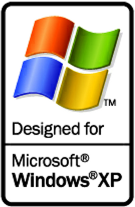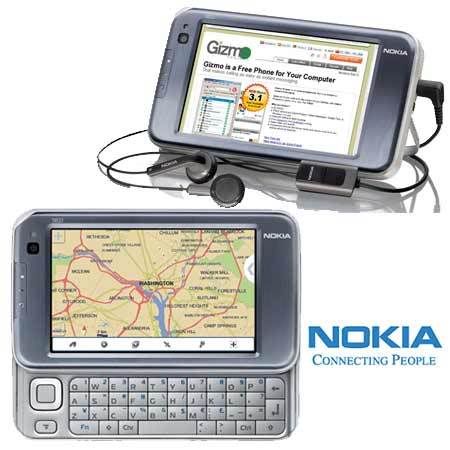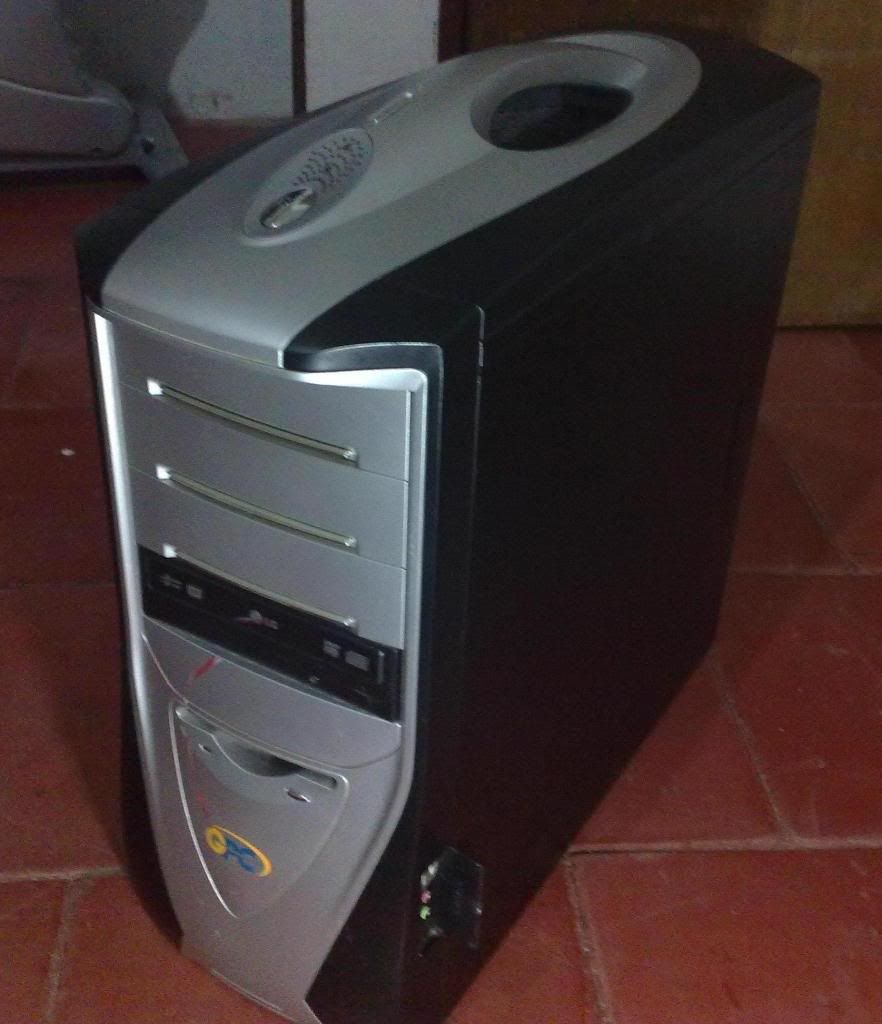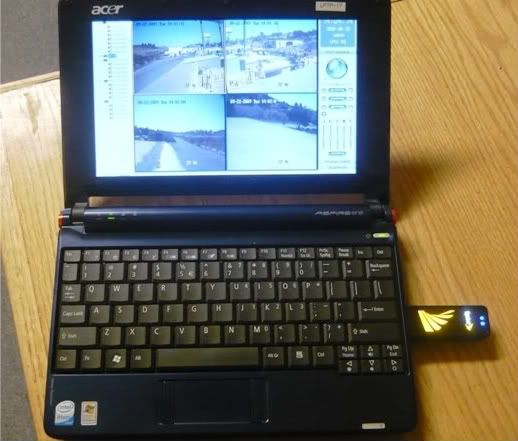Welcome Moonckey
Website News And Reviews About Phones, PCs, Gadgets Information For You
Kamis, 25 Februari 2021
Sabtu, 07 November 2009
Netbook gets speed boost from dual Atom chips
 SAN FRANCISCO - A Colombian computer maker has designed a netbook that aims to provide the performance of a standard laptop at a lower price.
SAN FRANCISCO - A Colombian computer maker has designed a netbook that aims to provide the performance of a standard laptop at a lower price.Haleron combined two of Intel's Atom processors in its new netbook, which it says provides better performance than existing models. Most netbooks today use a single Atom chip.
The Swordfish Net N102 includes two Atom N270 processors running at 1.6GHz. It is designed to provide the power of a standard laptop at a price most Latin Americans can afford, the company wrote on its Web site.
"The standard notebook or laptop computer, although an industry standard around the world, was out of reach for many Latin Americans," the company said.
A netbook with a single Atom chip "just could not support the multi-tasking needs of students and professionals," it said.
So it set out to build its own. It modified Intel's 945 chipset to run the two processors, which took it about six months. The processors divide the workload, much like a dual-core processor does, The company said.
But running two processors took its toll on the netbook's battery life. A three-cell battery provides only two-and-a-half hours of run time, so the company offers an additional six-cell battery that adds up to four-and-a-half hours of use.
"We have developed what we feel is the best solution for a load sharing dual Atom processor netbook," the company said. The netbook is priced at US$449, and the optional six-cell battery adds another $29.
It comes with 2GB of RAM and a 160GB hard drive. It also includes a Web cam, a 4-in-1 card reader and built-in WCDMA (Wideband Code Division Multiple Access) 3G broadband module and 802.11b/g wireless networking.
The netbook comes with Windows XP Home Edition. "We found that it works best on the Windows XP operating system. Both Windows Vista and the new Windows 7 performed below Window XP in the load sharing department," the company said.
By Agam Shah, http://computerworld.com
Jumat, 06 November 2009
Nokia N810 Internet Tablet Used to Showcase 3D Technology
 The world's largest phone maker, Nokia recently showcased an N810 Internet Tablet, boasting a 3D display that doesn't require glasses, at the company's Nokia world event in Stuttgart.
The world's largest phone maker, Nokia recently showcased an N810 Internet Tablet, boasting a 3D display that doesn't require glasses, at the company's Nokia world event in Stuttgart. The Finnish phone maker has said the technology has been in development for several years, but a lunch date for the final product is yet to be detailed, as the company cannot provide any specific release dates. The device could be part of an upcoming wave of 3D-enabled mobile phones, which could provide users with a different visual experience, directly on their mobile phone.
According to a recent news article on Pocket-lint, the Finnish phone maker has been displaying the said device at the Nokia World event.
The non-glasses-required 3D display has been featured on a Nokia N80 Internet Tablet, which isn't the planned launch platfrom for the technology. The said display is reportedly capable of delivering rudimentary 3D on a handled device.
Although the phone maker cannot deliver any specific details on when the technology will be featured on one of its upcoming devices, a Nokia representative has told the fellows over at Pocket-lint that the in-house tech, described as "advanced," has been in development for "several years" and that Nokia is working on 3D phones.
The Nokia N810 Internet Tablet, used in the demonstration, has been featured with a special display that has been reportedly developed by a secret, third-party manifacturer and is coupled with proprietary software to run the content.
It's still early to say if such a technology will be enabled on the company's next-generation mobile phones, but it's interesting to see Nokia working on improving its user's mobile experience.
Meanwhile, Nokia has recently entered the portable PC market, with its first x86-based, portable PC, the Booklet 3G netbook. This is regarded as a sign of change for the Finnish company, which had previously been focused on the mobile phone market.
Source: http://news.softpedia.com
Kamis, 05 November 2009
Lala Music Streaming iPhone App Launching Soon
 Music streaming service, Lala has been making news of late. Recently, the company partnered with Google in the latter's launch of a music service. TechCruncg is now reporting the impending release of Lala's app for the iPhone.
Music streaming service, Lala has been making news of late. Recently, the company partnered with Google in the latter's launch of a music service. TechCruncg is now reporting the impending release of Lala's app for the iPhone.Lala is a music service that lets users upload all their MP3 collection on to their online account to access them from anywhere. Users can also purchase new music for 10 cents a song.
TechCrunch writes that the app shall work pretty similiar to the native iPod app on the iPhone. However, one major difference between the two is that Lala's music stream entirely from the cloud.
That means, while there is no hassle of syncing your music constantly between your iPhone and your computer, the direct streaming could mean frequent interruptions if you have a patchy 3G connectivity in your area.
However, the company claims that the iPhone app intelligently caches a section of your library so that the listeners will seldom have interruptions while listening to streaming music.
As in the website, the Lala iPhone app also lets users stream any song for free exactly once before they are promted to purchase. And if you happen to like a song, the app also lets you to publish the song you are listening to on to your Facebook wall.
The Lala iPhone app is currently in the queue for Apple's approval. The fact that the iPhone app can stream music via a 3G network can get AT&T to cringe. But as we have seen a flurry of VoIP and streaming apps being approved in the past few weeks, this app should get through in all probability.
Source: www.iphonehacks.com
Selasa, 03 November 2009
Dual Core Atom CPUs in Netbooks? Don't count on it
 You may have seen some news over the last few days that Intel has started to ship a dual variant of their Atom processor. To some of you that may sound like good news for the mobile world as nearly every new netbook seems to be running on Atom, and who doesn't like a boost in performance? Well, as jkk points out, unfortunately the dual core Atom CPU is not for netbooks, they are actually for nettops, or low cost desktops.
You may have seen some news over the last few days that Intel has started to ship a dual variant of their Atom processor. To some of you that may sound like good news for the mobile world as nearly every new netbook seems to be running on Atom, and who doesn't like a boost in performance? Well, as jkk points out, unfortunately the dual core Atom CPU is not for netbooks, they are actually for nettops, or low cost desktops.In the beginning, there were two types of Atom chips, the kind that focused on low power consumption, low heat output, and small size, and the others (which we see in all the recent netbooks), focus on low power consumption, low heat output, and low price.
Now the Dual Core chips present a new focus, which is primally keeping prices low and performance high (relatively), or course keeping the low power consumption/low heat output out of the focus means that you have a CPU that isn't suitable for a netbook, which has minimal cooling, and limited power to be consumed.
For comparison, the Atom CPUs that we are used to seeing in netbooks, have a TDP of 2.5w, while the dual core version has an 8w TDP. So not only does that mean more power drain on your battery, but also there might not be enough cooling to keep the chip from overheating in a netbook.
On top of all of this, jkk says that he has gotten word that Intel is actually telling OEMs not use Dual Core Atom CPUs in netbooks. Looks like we'll need to wait for the next round of Atom CPUs in order to see anything new for the netbook wave.
Source: www.umpcportal.com
Minggu, 01 November 2009
Acer aims to ship over 40 million notebooks in 2010, may surpass HP
 Acer is quickly striding toward its goal of becoming the number one PC vendor worldwide, aiming to ship more than 30 million notebooks this year, and over 40 million next year.
Acer is quickly striding toward its goal of becoming the number one PC vendor worldwide, aiming to ship more than 30 million notebooks this year, and over 40 million next year.Acer's strongest competitor at thist point is HP, which currently holds the top position for units shipped, and is also forecasted to move 40 million or more notebooks in 2010. Both companies are expected to further trounce Dell in shipments.
Acer's performance for the fourth-quarter of 2009 is somewhat uncertain. The company originally planned for shipments to grow 10% sequentially, but component shortages may affect that. Despite its efforts to prepare for shortages, Acer says supplies of optical drives, panels, hard disk drives, and graphics chips are running thin.
Even if Acer lands a bit behind target in the last quarter, the first three quarters were better-than-expected, so the company will meet shipment goals for the year.
In only two years, Acer has doubled its annual notebook sales from 15.4 million in 2007, which is mostly attributed to its succes in the netbook segment.
By Matthew DeCarlo,www.techspot.com
Black Friday 2009 Netbook Deals Will Be So Much Better Than Last Year
 Netbooks are one of the most sought after gadgets for Black Friday 2009. The same was true last year. The big difference this year is that Window 7 netbooks are now available.
Netbooks are one of the most sought after gadgets for Black Friday 2009. The same was true last year. The big difference this year is that Window 7 netbooks are now available.This means that retailers will be trying to get rid of their XP netbook inventory and the very low priced netbooks will not have the latest OS installed.
I looked back at the Black Friday 2008 netbook deals and many deals were at the $299 price point. For that money you only got a Dell mini 9 for instance with 8.9 inch display, 512MB RAM, 4GB SSD running Ubuntu Linux.
This year I expect much better deals at below $200, likely hitting $150.
For $299 you can buy a Windows 7 netbook already today. The Acer A0D250-1695 Window 7 Netbook is selling for $299.99 on Amazon.com. Only downside on this one is the 3-cell battery.
I expect that you can find a Windows 7 netbook for about $250 on Black Friday and Thanksgiving. Windows XP netbooks should be a bargain at $150 and possibly some retailers try to sell you a Linux netbook for even below $150.
A Windows XP netbook is still not a bad choice especially if you get it below $200. The minimum on hardware you should look out for in a bargain Black Friday netbook is: 10.1-inch screen (if you want ultra-portable 8.9-inch are still out there). Intel Atom N270 (N280 would be better), 1GB RAM, 160GB HDD, WIFI (802.11g, 802.11n would be better), webcam and 6-cell battery.
By Luigi Lugmayr,www.i4u.com
Langganan:
Postingan (Atom)